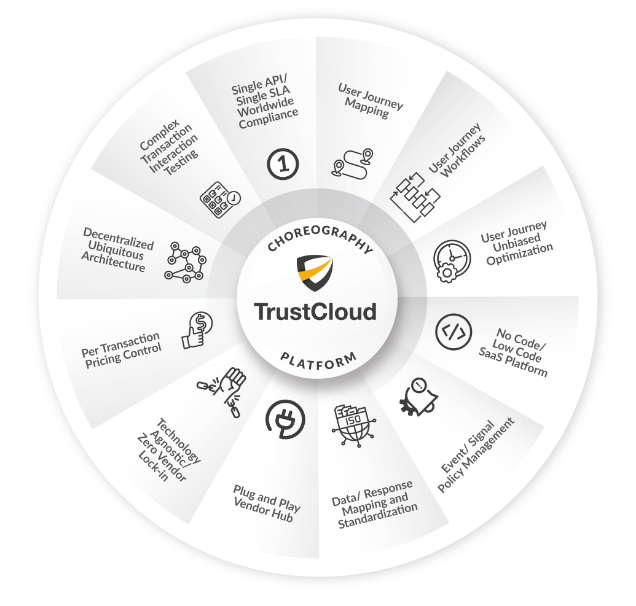Vendor Lock-in
Risks, Impacts, and Mitigation Strategies

By relying too much on a single software provider’s technology stack, customers may face difficulties in migrating to another provider, often resulting in significant costs, legal complications, or technical incompatibilities. This poses a significant challenge for businesses that need flexibility and want to avoid being restricted to one vendor.

One common issue with vendor lock-in is the use of proprietary file formats, which can only be read by specific software. This makes it challenging to switch to another product without losing data or converting files. Additionally, some vendors offer integrations with other software products, but only if the customer uses their specific software. This makes it difficult to switch to a different software provider without sacrificing functionality or paying additional costs for similar integrations.
Another concern is seen in SaaS transactions, where electronic suppliers may impose contractual terms that require customers to commit to purchasing a specific volume of services each year or pay penalties for early termination. Complex pricing models used by some SaaS providers may make it difficult for customers to predict costs or compare prices across different providers. These tactics can make it challenging for customers to reduce their transactional volume and switch to a different provider, even if it would be more cost-effective or better suited to their needs.
Risks and Impacts
Limited flexibility and scalability
Increased costs and pricing disadvantages
Limited innovation and customisation
Data security and privacy risks
Difficulty in switching vendors or platforms
Potential loss of data or intellectual property
Financial and operational consequences
Legal and compliance risks
Negative effects on vendor relationships
Stifled competitiveness and market share
Operational disruptions and business continuity risks
How to Avoid Vendor Lock-in

Research your cloud vendor thoroughly before making any commitments.
Evaluate cloud vendors based on their capabilities, technology offerings, pricing models, contract terms, and exit clauses.
Prioritise multi-cloud strategies to maintain flexibility, negotiation power and control over the technology landscape.
Keep a close eye on formats to ensure that you are not locked into a particular vendor’s proprietary format.
Plan for data migration and ensure that data can be easily exported and imported in standardised formats from one vendor to another.
Retain data governance to maintain control over your data.
Develop a potential exit strategy with every vendor including defining exit terms in the contract and considering the availability of migration tools and processes.
Invest in building internal capabilities to reduce dependency on external vendors.
Actively manage the risk by monitoring market changes and regularly evaluating options for public cloud providers.
Implement a Choreographer to compare and choose the best service provider for each specific use case.
Breaking Free from Vendor Lock-In
The microservices architecture is gaining popularity in cloud computing due to its scalability and flexibility. Coordination between multiple microservices can be achieved through two methods: choreography and orchestration.
Choreography is a decentralized approach in which microservices work independently and coordinate with each other using cues or events. The saga or workflow control is determined by a predefined set of cues or events. On the other hand, orchestration is a centralized approach in which microservices are controlled by an orchestrator or conductor.
The main difference between choreography and orchestration is that choreography allows each microservice to be independent and make decisions based on events and cues from other services, while orchestration represents control from one party’s perspective in decision-making.
To avoid vendor lock-in, a choreography-based solution may be a better option compared to an orchestration-based solution. This is because an orchestration solution may lead to an orchestrator lock-in, which is similar to a vendor lock-in. In contrast, a choreography-based solution frees a company from any type of vendor or orchestrator lock-in, as each microservice operates independently and can be replaced or updated without affecting the entire system.

Benefits of Using a Choreographer
to Mitigate Vendor Lock-in
Promotes interoperability between services from different vendors.
Provides flexibility and fosters innovation.
Reduces dependency on a single vendor’s technology or service.
Provides a stronger negotiation position for pricing and contract terms.
Lowers switching costs.
Transitioning to a Choreographer

Implementation projects for choreographers are typically launched four months before the contract renewal period for the SaaS providers that kidnap their customers.
Steps to take:
01
Identify the current vendor lock-in situation.
02
Choose the right choreographer.
03
Integrate the choreographer.
04
Activate digital transactions in the new choreographer.
05
Divide transactions – A/B Testing.
06
Verify transaction quality.
07
Strongly negotiate with the previous manufacturer.
08
Monitor and optimize.

How Can TrustCloud Help You
As the first choreographer for secure digital transactions in the market, our solution offers a unique advantage over other solutions by avoiding vendor lock-in, allowing businesses to integrate different systems and components seamlessly while maintaining maximum flexibility and independence.
With this approach, organizations can choose the best tools and technologies available on the market without being restricted to a specific vendor or technology. TrustCloud is a highly decentralized and distributed system, enabling different teams to develop, deploy, and maintain components independently, leading to a more scalable and resilient system.
By adopting our choreography-based solution, businesses can ensure that they have the freedom to evolve and innovate in response to market demands and changes without the risk of being locked into a single vendor’s proprietary technology or platform.
























